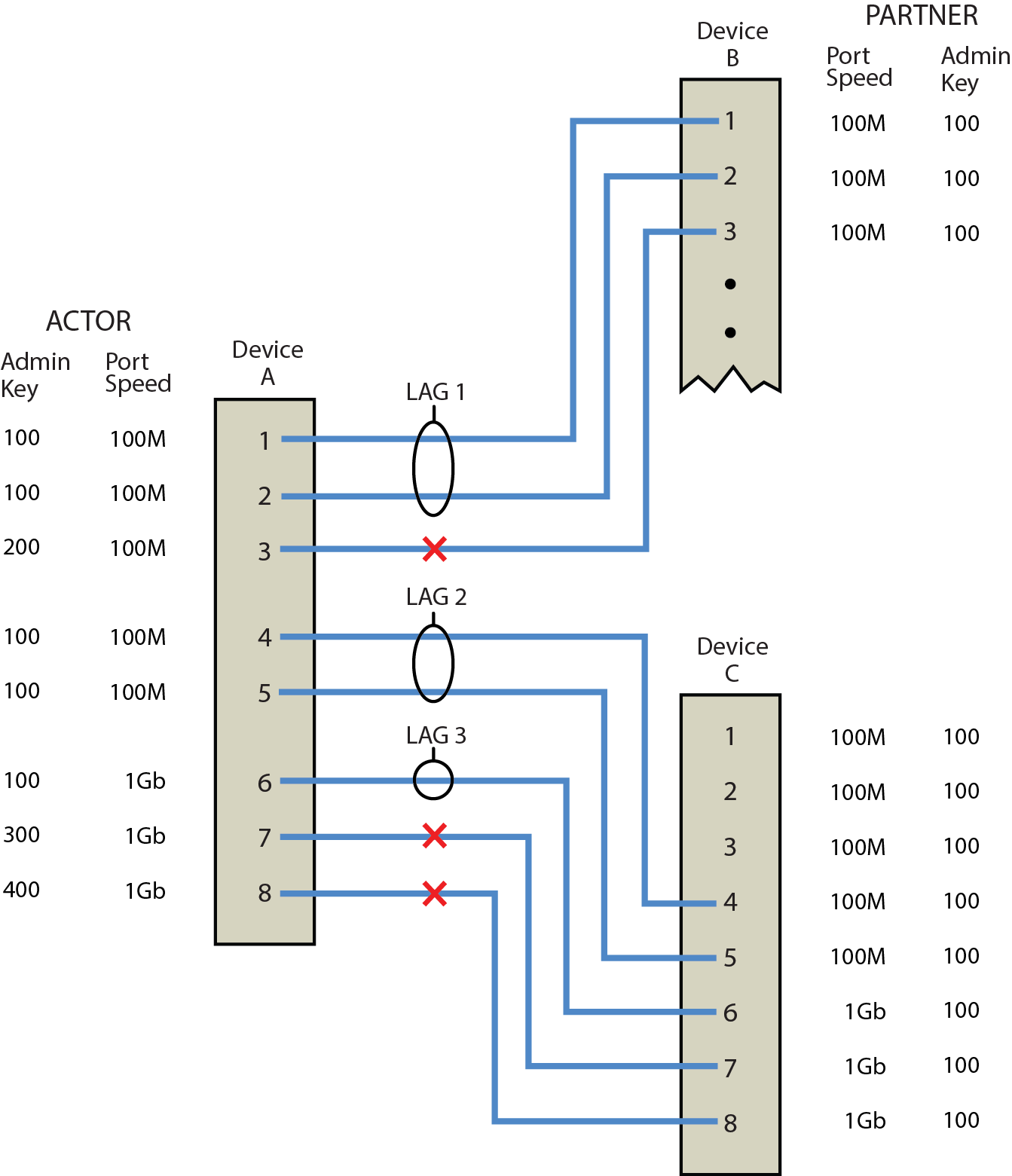Once a LAG is formed, two steps must take place before traffic can pass over the LAG:
A system ID, made up of the device MAC address and the system priority, is associated with each device. The device with the lower system priority is in charge of selecting the LAG members to move to the attached state. If a system priority tie occurs, the system with the lower MAC address value breaks the tie.
Only LAG members with the same port speed can be moved to the attached state. In a case where multiple speeds are present in a LAG, the LAG member with the lowest port priority on the device in charge, as well as all other members with the same port speed as the member with the lowest port priority, are selected and moved to the attached state. Using LAG2 in LAG Formation as an example, if the LAG2 member port priorities are set as shown in LAG2 Port Priority Assignments, ports 4 and 5 are moved to the attached state.
LAG2 Port Priority Assignments
| Port Number | Port Speed | Port Priority |
|---|---|---|
| 4 | 100Mbps | 200 |
| 5 | 100Mbps | 300 |
| 6 | 1Gb | 300 |
This is true because port 4 has the lowest priority of the three ports currently in the LAG, and port 5 has the same speed as the port with the lowest priority in the LAG, regardless of its priority. Because port 6 has both a different speed and a higher priority than the port with the lowest priority in the LAG, it is not moved to the attached state.
If LAG members with different port speeds should tie for the lowest port priority, the LAG member with the lowest port number breaks the tie. In our example, should all three ports have the same port priority, ports 4 and 5 would still be the ports moved to the attached state because port 4 has the lowest port number and port 5 has the same port speed as port 4.
If in our example you wanted the reverse outcome of port 6 moved to the attached state instead of ports 4 and 5, setting port 6 to a lower priority than ports 4 and 5, as well as enabling the single port LAG feature on this device, would accomplish that goal.
Aggregatable ports not moved to the attached state are made available to form another LAG providing a LAG resource is available for this system. Port 6 in LAG Formation, was not moved to the attached state. The only criteria port 6 does not meet to form its own LAG is rule 4: being a single aggregatable port. The single port LAG feature must be enabled for port 6 to form a LAG. If single port LAG is enabled on this system, port 6 would form and attach to LAG 3. LAGs Moved to Attached State illustrates the three LAGs described in this example.

Should an aggregatable port be available with all LAG resources depleted for this system, the port is placed in LACP standby state. Ports in standby state do not forward traffic. If all ports initially moved to the attach state for a given LAG become unavailable, a LAG resource will then be available. LACP will initiate a new selection process using the ports in standby state, using the same rules as the initial process of forming LAGs and moving ports to the attached state.

 Print
this page
Print
this page Email this topic
Email this topic Feedback
Feedback